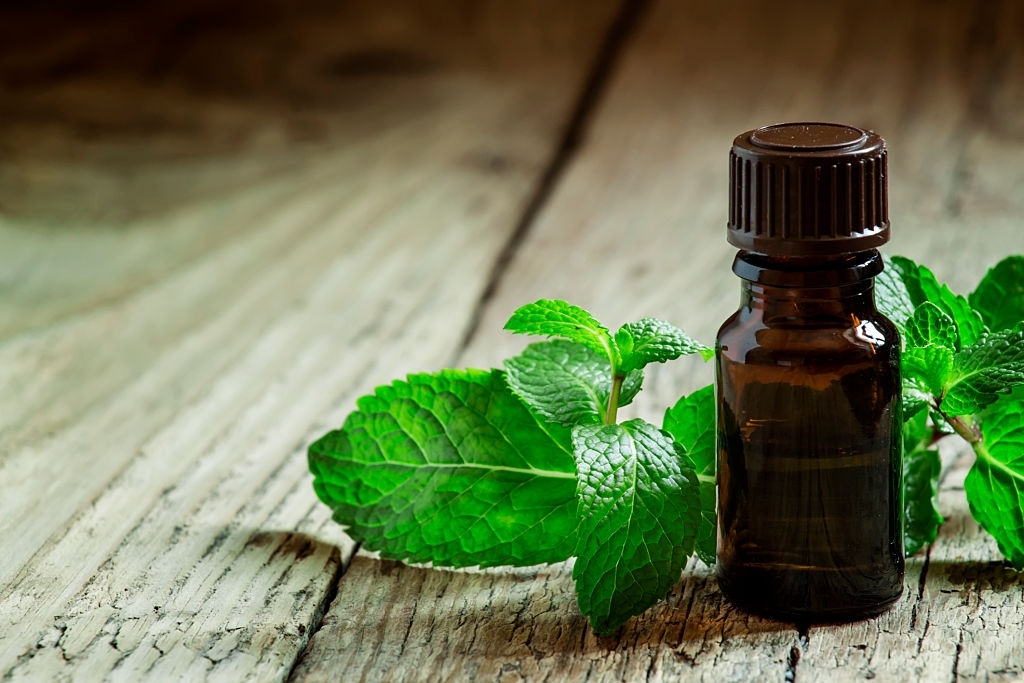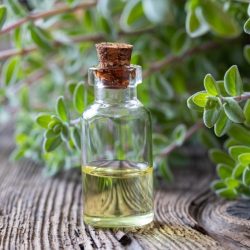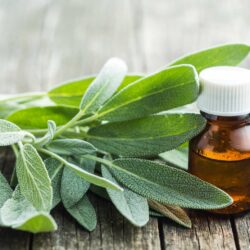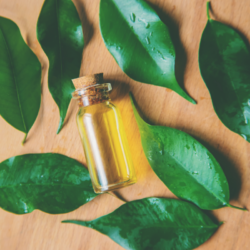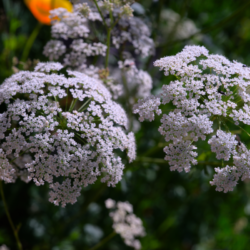Illustrious since antiquity, peppermint was first described in England in 1696 and subsequently cultivated in Germany and then in the Netherlands around 1750. Traces of its cultivation date back nearly 4,000 years . In Edfu, Egypt, hieroglyphs found on the walls of a temple indeed allow us to consider that the Egyptians used mint to make a number of ceremonial perfumes . Then dedicated to Horus , it has also been found in fragments in various tombs.
A bit of mythology
When we talk about the gods of the Greek and Roman pantheons , as we approach the plant world, a basic structure often emerges: a god is caught fooling around with a nymph by his wife, who punishes. This is what happened to Myntha , a coveted and courted nymph, surprised in the arms of Hades by Persephone . Green with jealousy, the daughter of Zeus transformed the unfortunate woman into a mint; a plant without seeds, thus making it unable to reproduce.
Interestingly, myths confuse mint with sterility. This is all the more congruent when you know that peppermint is a hybrid. This therefore explains the x in its Latin name, Mentha x piperita . Although mythical mint is not propagated by seed, it hybridizes easily in nature (which is why mint botany is so complicated, and rightly so).
A little history
Dioscorides (1st century) thought of this plant that it inspired love , while Hippocrates thought of it as long-term anaphrodisiac . In the 19th century, Cazin described two of its effects on the digestive and nervous systems . When applied topically, mint decongests milky breasts, while alcoholate is used to relieve muscle and rheumatic pain. As a mouthwash, a decoction of the leaves can relieve painful gums.
Present among the Assyrians and the Babylonians, it is not surprising that it is also found among the Greeks to treat angina and stomach pains. If Hippocrates and Aristotle declared it an aphrodisiac, Dioscorides maintains the opposite; for him, she inspired the pleasures of love.
What are the pharmacological properties of Peppermint leaf essential oil ?
Antispasmodic and choleretic effects:
Hepatic regulator and protector , mint essential oil inhibits spasms induced by acetylcholine, histamine and serotonin , similarly to atropine. It has a relaxing action on the smooth muscles and reduces spasms of the sphincter of Oddi in the gallbladder, having a dilating effect on the vessels. It exerts a direct action on the calcium channels involved in the phenomena of contraction and would be indicated to treat colon spasms.
Choleretic and cholagogue , as well as stimulating pancreatic , it increases the secretion of bile and its excretion, thanks to these fluidifying ketones. Peppermint is also blood purifying; it eliminates free radicals as well as therapeutic waste.
This oil also reduces spasms of the large intestine, and facilitates the introduction of the colonoscope during a colonoscopy.
Analgesic and anti-inflammatory effects:
Menthol induces an analgesic action when applied topically by stimulating cold receptors. Clinical trials carried out on humans have shown a favorable action of the essential oil on migraine by reducing the duration of the attack.
Analgesic , this essential oil is used in topical treatment, in the pains reduced by the cold; peppermint excites the cold receptors and stimulates cooling by action on the calcium channels. Its analgesic properties are induced by selective activation of kappa-opioid receptors, especially locally.
Its anti-inflammatory and immunomodulating effect has been shown in Schistosoma mansoni infections .
Antimicrobial effect:
Peppermint essential oil is antibacterial against Staphylococcus aureus, meningococcus, Salmonella enteridis and Listeria monocytogenes . It is also anti-herpetic on HSV-1 and HSV-2 even resistant to acyclovir , as well as antifungal on Trichosporon ovoides (agent of a mycosis of the scalp).
The menthol it contains can help reduce antibiotic resistance by acting on the detection of the quorum of bacteria or “quorum sensing”. You should also know that menthol and mint essential oil have considerable anti-plasmid activity in Escherichia coli.
Tonic effect:
Menthol has a stimulating action on the central nervous system .
Vascular effect:
The essential oil induces arterial vasoconstriction which increases blood pressure and is helpful in migraine.
Other effects:
- Nasal decongestant
- Cerebral tonic and stimulant, energizing (reduces mental viscosity)
- Hormone-like, it promotes menstruation
- Active on the SNA, Ʃ +
- Promotes cellular metabolic respiration (like all mints)
- negative (electronegative)
- Cortison-like (if monoterpenes above 10%)
- Immunostimulating effect, increases innate immunity and humoral response
- Secretolytic, nasal decongestant, astringent
- GABA-ergic
Does Peppermint essential oil require any precautions?
- In high doses, menthone is excito-suppressive and hypertensive
- May cause headache, bradycardia, tremors, ataxia, insomnia, bronchial spasm as well as spasm of the glottis and larynx
- Drug interactions with homeopathic remedies
- Possible allergy to menthol
- Do not diffuse or put in the bath
- Forbidden in infants, can be fatal!
- Contraindicated in pregnant (abortive) or breastfeeding women and in children (risk of bronchospasm)
- Reserved for adults
- Do not combine with cortisone (if monoterpenes greater than 10%)
- Caution in case of gastroesophageal reflux, gallstones or hepatopancreatic disorder ( per os )
- Drug interactions with essential oils containing more than 10% sesquiterpenes
- Risk of neurotoxicity that can induce epileptic seizures at high doses
- Caution in people with autoimmune diseases, epilepsy, asthma, the elderly or with Parkinson’s, as well as neurosensitive people
- Do not use in people deficient in G6PD (glucose-6-phosphate-dehydrogenase), involved in its detoxification (risk of toxicity by accumulation) – ( menthol )
- Contraindicated for internal use
Medical bibliographic sources and clinical trials :
-
Soković MD, Vukojević J, Marin PD, Brkić DD, Vajs V, van Griensven LJ. Chemical composition of essential oils of Thymus and Mentha species and their antifungal activities. Molecules. 2009
-
Seema Saxena, Veena Uniyal, R.P.Bhatt. Inhibitory effect of essential oils against Trichosporon ovoides causing piedra hair infection. Brazilian Journal of Microbiology (2012)
-
Imai H, Osawa K, Uasuda H, Hamashima H, Arai T, Sasatsu M. Inhibition by the essential oils of pepermint and spearmint of the growth of pathogenic bacteria. Microbios. 2001
-
Schuhmacher A, Reichling J, Schnitzler P. Virucidal effect of peppermint oil on the envelopped viruses herpes simplex virus type 1 and type 2 in vitro. Phytomedicine. 2003
-
Awaad, M. H. H.; Abdel-Alim, G. A.; Sayed, K. S. S.; Kawkab; Ahmed, A.; Nada, A. A.; Metwalli, A. S. Z.; Alkhalaf, A. N. Immunostimulant effects of essential oils of peppermint and eucalyptus in chickens. Pakistan Veterinary Journal 2010
-
Göbel H, Fresenius J, Heinze A, Dworschak M, Soyka D. Effectiveness of Oleum menthae piperitae and paracetamol in therapy of headache of the tension type. Nervenarzt. 1996
-
Haniadka, R., Popouri, S., Palatty, P. L., Arora, R., & Baliga, M. S. (2012). Medicinal plants as antiemetics in the treatment of cancer: a review. Integrative cancer therapies
-
Galeotti N, Di Cesare Mannelli L, Mazzanti G, Bartolini A, Ghelardini C. Menthol: a natural analgesic compound. Neurosci Lett. 2002
-
Gunnar Wasner, Jörn Schattschneider, Andreas Binder, Ralf Baron. Topical menthol—a human model for cold pain by activation and sensitization of C nociceptors. Brain (2004)
-
Sundstrup E, Jakobsen MD, Brandt M, Jay K, Colado JC, Wang Y, Andersen LL. Acute effect of topical menthol on chronic pain in slaughterhouse workers with carpal tunnel syndrome: triple-blind, randomized placebo-controlled trial. Rehabil Res Pract. 2014
-
Barkin RL. The pharmacology of topical analgesics. Postgrad Med. 2013
-
Sun Z, Wang H, Wang J, Zhou L, Yang P. Chemical Composition and Anti-Inflammatory, Cytotoxic and Antioxidant Activities of Essential Oil from Leaves of Mentha piperita Grown in China. Pizzo SV, ed. PLoS ONE. 2014
-
Zaia MG, Cagnazzo T di O, Feitosa KA, et al. Anti-Inflammatory Properties of Menthol and Menthone in Schistosoma mansoni Infection. Frontiers in Pharmacology. 2016
-
Hall AC, Turcotte CM, Betts BA, Yeung WY, Agyeman AS, Burk LA. Modulation of human GABAA and glycine receptor currents by menthol and related monoterpenoids. Eur J Pharmacol. 2004

